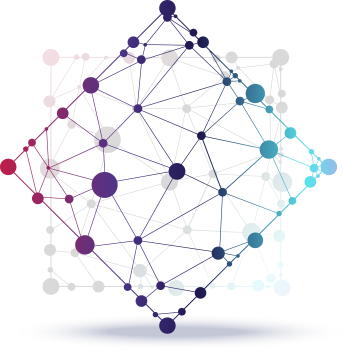- Fueling Futures: Expert education news consult insights deliver clarity and empower informed decisions for students, parents, and educators alike.
- The Rise of Personalized Learning
- The Integration of Technology in the Classroom
- The Growing Emphasis on STEM Education
- The Role of Coding in STEM
- Benefits of Hands-On STEM Activities
- The Importance of Social-Emotional Learning (SEL)
- Addressing Equity and Access in Education
Fueling Futures: Expert education news consult insights deliver clarity and empower informed decisions for students, parents, and educators alike.
In today’s rapidly evolving world, staying informed about advancements in education is paramount for students, parents, and educators alike. The landscape of learning is constantly shifting, influenced by technological innovation, pedagogical research, and societal changes. Access to reliable and insightful education news consult is no longer a luxury but a necessity. Understanding these shifts allows for informed decision-making, leading to improved educational outcomes and a brighter future for all stakeholders. This article aims to provide a comprehensive overview of current trends and crucial considerations within the educational sphere.
Navigating the complexities of modern education requires a proactive approach. Parents need to be aware of the latest curricula changes, funding models, and innovative educational programs. Educators require access to professional development opportunities and research-based strategies to enhance their teaching practices. Students benefit from understanding emerging career paths and the skills needed to succeed in a competitive job market. This is where comprehensive and accessible information becomes key, facilitating informed discussions and collaborative efforts to build a more effective and equitable education system.
The Rise of Personalized Learning
Personalized learning, a pedagogical approach focused on tailoring instruction to meet the individual needs of each student, is gaining significant traction. This method moves away from the traditional “one-size-fits-all” model and embraces the diversity of learning styles, paces, and interests. Technology plays a crucial role in enabling personalized learning, with adaptive learning platforms providing customized content and feedback to students. These platforms utilize algorithms to assess student performance and adjust the difficulty level accordingly, ensuring that each learner is challenged appropriately.
However, implementing personalized learning effectively requires careful planning and consideration. Adequate teacher training, access to technology infrastructure, and addressing equity concerns are essential for success. Data privacy and the ethical implications of using student data must also be carefully addressed. Despite these challenges, the potential benefits of personalized learning are substantial, potentially leading to increased student engagement, improved academic performance, and a greater love of learning.
| Increased student engagement | Teacher training requirements |
| Improved academic performance | Technology infrastructure costs |
| Caters to diverse learning styles | Data privacy and security concerns |
The Integration of Technology in the Classroom
The integration of technology into the classroom is no longer a futuristic concept; it’s a present-day reality. From interactive whiteboards and tablets to online learning platforms and virtual reality, technology is transforming the way students learn and teachers teach. Educational apps and software provide engaging and interactive learning experiences, while online resources offer access to a wealth of information. The potential for collaboration and global connections through technology enriches the learning process.
But effective technology integration isn’t just about adopting the latest gadgets. It’s about using technology purposefully to enhance learning outcomes. Teachers need professional development to learn how to effectively incorporate technology into their lessons and leverage its potential to differentiate instruction. It’s also vital to address the digital divide, ensuring that all students have equal access to technology and the internet, regardless of their socioeconomic background. The focus should be on technology as a tool to support learning, not as a replacement for effective teaching.
- Interactive whiteboards enhance engagement.
- Online platforms provide access to vast resources.
- Virtual reality creates immersive learning environments.
The Growing Emphasis on STEM Education
There’s a globally recognized need for a workforce skilled in Science, Technology, Engineering, and Mathematics (STEM) fields. This demand has led to a growing emphasis on STEM education in schools, with programs designed to foster critical thinking, problem-solving skills, and innovation. STEM education isn’t just about learning facts; it’s about applying knowledge to real-world challenges.
Effective STEM instruction often incorporates hands-on learning experiences, such as robotics competitions, coding camps, and science fairs. These activities encourage students to collaborate, experiment, and learn from their mistakes. Furthermore, promoting STEM education to underrepresented groups is crucial for ensuring diversity in these fields. Initiatives aimed at engaging girls and students from minority backgrounds in STEM can help address the long-standing gender and racial disparities in these critical areas.
The Role of Coding in STEM
Coding is quickly becoming a fundamental skill in the 21st century, and its integration into STEM education is gaining momentum. Learning to code not only equips students with valuable technical skills but also develops computational thinking skills, such as logical reasoning, problem decomposition, and algorithmic thinking. These skills are transferable to various disciplines and can benefit students regardless of their career path. There are increasingly accessible coding resources available for students of all ages, from block-based coding platforms for beginners to text-based programming languages for more advanced learners.
Providing early exposure to coding can spark students’ interest in STEM fields and prepare them for future success. Furthermore, incorporating coding into other subjects, known as computational thinking across the curriculum, can enhance learning in other areas, such as mathematics, science, and even language arts. The emphasis on coding reflects the growing recognition of its importance in a technologically driven world.
Benefits of Hands-On STEM Activities
Hands-on STEM activities provide students with opportunities to apply their knowledge in a practical and meaningful way. Building robots, designing structures, and conducting experiments foster critical thinking, problem-solving, and collaboration skills. These activities also increase student engagement and make learning more enjoyable. Allowing students to learn through failure is also a critical component of these activities; mistakes are seen as learning opportunities and part of the iterative process.
The benefit extends beyond technical skills; hands-on learning cultivates a sense of ownership and empowers students to become active participants in their education. Collaborative projects encourage teamwork and communication skills, preparing students for success in collaborative work environments. Making STEM learning relevant to real-world problems also helps students understand the importance of these fields and inspire them to pursue careers in STEM.
The Importance of Social-Emotional Learning (SEL)
While academic achievement is essential, educators and parents increasingly recognize the importance of social-emotional learning (SEL) in fostering well-rounded individuals. SEL encompasses a range of skills, including self-awareness, self-regulation, social awareness, relationship skills, and responsible decision-making. These skills are crucial for success not only in school but also in life.
Integrating SEL into the curriculum can create a more supportive and inclusive learning environment. Teaching students how to manage their emotions, resolve conflicts peacefully, and empathize with others fosters a sense of belonging and improves school climate. SEL programs and initiatives can help students develop resilience, overcome challenges, and build positive relationships. This in turn can lead to improved academic performance, reduced behavioral problems, and increased civic engagement – strengthening the overall learning environment.
- Self-awareness: Understanding one’s own emotions and strengths.
- Self-regulation: Managing emotions and behaviors effectively.
- Social awareness: Understanding the perspectives of others.
Addressing Equity and Access in Education
Despite advancements in education, significant inequities persist, with students from marginalized communities often facing systemic barriers to success. These barriers include inadequate funding for schools in low-income areas, lack of access to quality teachers and resources, and discriminatory disciplinary practices. Addressing these inequities is crucial for ensuring that all students have an equal opportunity to thrive.
Closing the achievement gap requires a multi-faceted approach, including investing in early childhood education, providing targeted support to struggling students, and addressing the social determinants of education, such as poverty, housing insecurity, and healthcare access. Culturally responsive teaching practices, which recognize and value the diversity of students’ backgrounds, can also create a more inclusive and equitable learning environment. The goal is to create a system where zip code doesn’t dictate educational opportunity.
| Funding disparities | Equitable resource allocation |
| Lack of access to quality teachers | Teacher recruitment and retention programs |
| Discriminatory disciplinary practices | Restorative justice initiatives |
The ongoing evolution of the educational landscape demands continuous adaptation and a commitment to innovation. By embracing personalized learning, integrating technology effectively, emphasizing STEM education, prioritizing social-emotional learning, and addressing equity concerns, we can create a more effective, equitable, and engaging education system for all. A commitment to education news consult, coupled with proactive implementation of these strategies, is vital for fueling the futures of students and building a brighter tomorrow.



